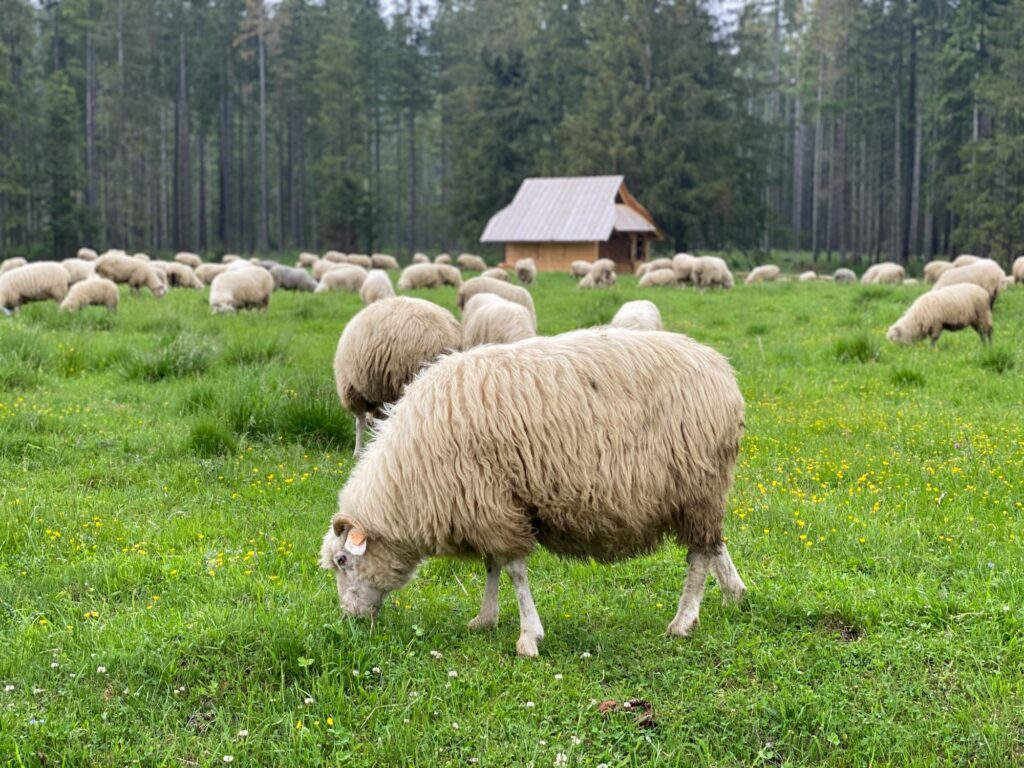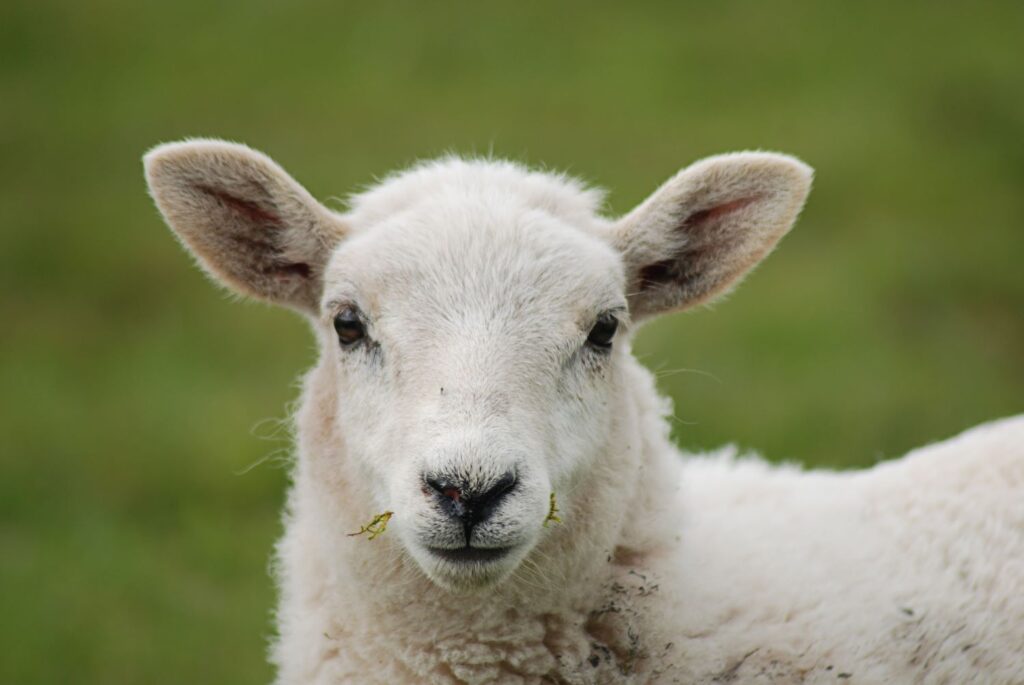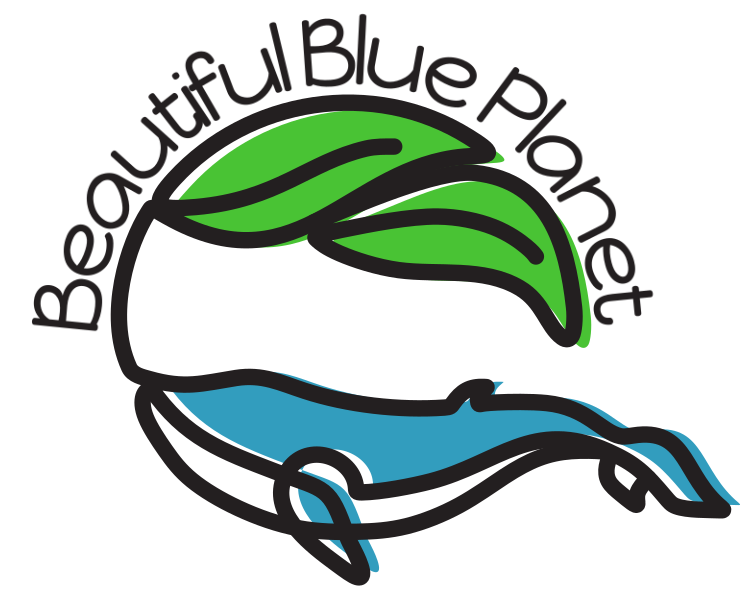Wool is one of the best fibers to use for clothing and other home textiles. It’s unparalleled in durability, comfort, utility, and recyclability. And most importantly, it’s a very eco-friendly fiber—if it’s grown the right way.
And that way can be encouraged by you, the consumer.
Wool has been used as a fiber for clothing and warmth for thousands of years. And in modern times it remains one of the most useful and versatile fibers.
Wool is a natural fiber that is 100% biodegradable. That means it does not release plastic microfibers into the environment when we wear them and when we wash them.
The plastic microfibers enter the food chain where they damage the organisms that accidentally ingest them. Like the plankton at the bottom of the food chain in the ocean that ingest microfibers, which are not digestible, leaving no room for the real food. This impacts their ecosystem. Our oceans.
Wool is a renewable resource because we can grow it and harvest it.
But there have been grave issues in modern wool production. Concerns are that the animals are often treated inhumanely. And that sheep farming is destructive to land and ecosystem biodiversity. This awareness has steered consumers away from wool and toward synthetic fibers instead.
But we don’t have to turn to plastic.
It’s a mistake to use synthetic fibers because of the threat to the tiniest animals that ingest them at the bottom of the food chain. Damage to them multiplies up through the food chain. There’s movement toward the incredibly important issue of treating all animals humanely. And there’s movement toward using grazing practices the are actually beneficial to the planet.
With consumer awareness and pressure, we can encourage the change to the sheep farming practices that are beneficial to the planet while keeping the animals happy and healthy.
What makes wool so good?
Wool is one of the best fibers there is, and here are some reasons why:
- Wool is famous for being an excellent thermoregulator. That means it keeps you warm in the cold and it keeps you cooler in the heat.
- It’s a natural fiber that’s very good at moisture wicking. (Read more here on natural fibers vs. synthetic.)
- Because it can absorb moisture so well, it keeps you warm when it gets wet. (That explains the use of thick wool sweaters by all the old-time fishermen.) And that makes it a perfect outdoor fiber. It dries quickly, too.
- Wool is odor resistant, so you need less washing (another environmental benefit).
- It’s naturally fire retardant, so you don’t have to worry about your layers melting onto your skin in case of a fire or even from just an ember flying out of a campfire.
- It’s durable, one of the most durable textile fibers.
- It’s the most donated fiber to secondhand shops and other reuse, a testament to its durability.(Source)
- It’s the most recycled and recyclable fiber out there, having been recycled for around 200 years.(Source)
- Wool is a renewable resource because we can grow it and harvest it.

Is wool scratchy or itchy? Here are some ideas
A lot of commercial wool is chemically cleaned and processed which is believed to cause the itchy and scratchiness. But this is something that can be avoided by some producers. Look for minimally processed wool.
Also, you can try Merino wool, known for its softness and wearability for next-to-the-skin base layers.
How are sheep being poorly treated?
Mulesing
Some breeds of Merino wool are vulnerable to a parasitic infestation called flystrike. The wrinkly skin in the butt area provides an egg laying site for blowflies. The larvae hatch and then feed on the fecal matter around the butt and the cycle continues, attracting and generating more flies. Within 3-6 days the sheep can die of ammonia poisoning from the flies.
The cure for this is insecticidal dipping, with its own problems. Or, what’s been done in many areas, is the removal of the naturally wrinkly skin when they’re little lambs. This is the process of “mulesing.” It allows a smooth new skin to grow, which is more resistant to fly egg laying.
But it’s done without pain killers before the procedure, though a topical is applied after. Better analgesics would be too expensive for many farming operations. But there are other methods to avoid flystrike.
One is Merino sheep breeds whose bodies are more resistant to the flystrike problem. While that is helping, it takes time to change over sheep breeds. Most Australian wool producers are still using the mulesing procedure, but public awareness and purchasing power have been helping to change the methods used.
Tail Docking
Another process is tail docking where the tails are removed for a cleaner fleece and easier access to the wool at shearing time… Again, without pain killers.
Both of these procedures is obviously painful and the young animals come out of it screaming and bleeding and just left to their own devices.
And in larger farms with many workers, stress is higher and supervision is lower so that abusive treatment arises and even becomes commonplace when it comes to animal management and shearing. At some places animals are man-handled, badly treated, and some are even left to die from injuries, laying in the mud. You can find these stories and images online, thanks to PETA.
Since these practices have been exposed, a certification for humane treatment of animals has become available. Where farms go through certification and are monitored. So when you buy Merino wool, you can look for the ZQ Merino certification and know your garment was created without any animal cruelty. But some companies make a statement about their sources being humane.
No animal should ever be mistreated. How we treat animals is how we end up treating each other and the entire planet. Our planet has no place for cruelty.
What happens when land is overgrazed?
With the drive for more sheep and greater production, overgrazing has led to deteriorated lands. This has given sheep farming a bad reputation on the environmental front.
Denuded soil leads to soil erosion by wind and by rain. With fewer plants on the soil, rainfall turns to runoff and penetration is reduced. This lowers moisture stored in the soil and ultimately leads to desertification—the process of land turning to desert (without the benefit of evolved and adapted species replacing the lost native plants).
With less native vegetation and lowered rainfall penetration, the local ecosystem suffers and species are lost. Fewer plants for insects for pollination and predator-prey relationships, fewer animals that eat insects, and so on, leading to biodiversity loss.
But regenerative agriculture reverses the deterioration of soil. And likewise, with pastured animals Holistic Management practices reverse the effects of grazing, prevent overgrazing, increase biodiversity, and actually increase the organic matter and bioactivity in the soil, sequestering more carbon dioxide.
What happens when the land is grazed with Holistic Management practices?
Holistic Management is an approach to land management for pastoral animals, using Holistic Planned Grazing, which strives to enrich and enhance the land rather than impoverish it.
It was developed by Allan Savory who went further to start the Savory Institute to teach the techniques he found to work that improve soil and increase biodiversity from grazing animals.
It involves planning and observation so that one area of pasture can be grazed with high numbers of animals until a certain point. But not to overgraze it, because the pasture plants shouldn’t be killed off. So the animals are moved to another area while the first area regrows and repairs. And so on, until the cycle repeats.
The process of allowing the pasture plants to regrow brings more carbon dioxide from the atmosphere and fixes it into the soil in useful forms. The results are increased soil organic matter which increases rainwater infiltration; flourishing native plants which reverses loss and improves biodiversity; and increased CO2 uptake which contributes to lowering CO2 in the atmosphere, reducing farming impact on climate change.
When the animals graze they put out manure. The animal hooves grind it into the soil, increasing the contact with the soil, enriching it and helping the plants to regrow from the grazing. Closing the loop.
It’s complex, but so are all natural systems. And it benefits not only the land and the farmer, but it benefits local economies, too. See a few videos on how Holistic Management helped farmers in various parts of the world:
Livestock had long been blamed for creating deserts, but Savory realized it was how those livestock were managed that was the problem, and it was the management that had to change.
~Savory Institute, Holistic Management
What about methane emissions?
Sheep and other ruminant animals are known to be methane gas producers. Methane, CH4, is a greenhouse gas that is 28 times stronger than carbon dioxide, CO2. But it lasts 8-12 years in the atmosphere whereas CO2 lasts thousands of years. Plus nitrous oxide, N2O, is another potent greenhouse gas emitted by ruminant livestock. It lasts a hundred or so years.
The demand for animal meat and dairy is the predominant reason the greenhouse gases they produce has risen, making them an issue for climate change. More animals are often in denser farm populations to increase production. This leads to less grazing and more dry food like hay and corn, especially for cattle.
And surely, more people means more demand for wool.
Before I go any further, let’s get a little perspective here.
The average:
- dairy cattle beast produces approximately 98kg of methane per year
- beef cattle beast produces approximately 61kg per year
- deer produces approximately 25kg per year !
- sheep produces approximately 13kg per year
This is according to the New Zealand Agricultural Greenhouse Gas Research Centre. (Funded by the New Zealand Government). (Anaerobically digested human waste and rice paddies rank up there too.)
For the farm animals listed, it’s the dry matter they eat that produces the methane. And it’s the amount of nitrogen added to a farm in the forms of feed and fertilizers that are responsible for the nitrous oxide generation. (This is info comes from the New Zealand Ag Matters. Please, go here and watch the video on mitigating methane production. )
Additionally, when the animals are not grazing and are fed in dense feedlots, manures from these animals are often piled high and left to decompose anaerobically. This generates additional methane and nitrous oxide.
What to do about methane?
An alternative is increasing grazing time to reduce methane output, and so the manures are spread across the soil where they degrade aerobically. This has the potential to eliminate methane production and can improve soil fertility so CO2 is absorbed from the atmosphere.
This is what Holistic Management aims to achieve.
Sheep, especially, prefer to eat green grasses and forbs.
When manure drops during grazing it can decompose aerobically. This builds soil carbon, enriching soil with the carbon from carbon dioxide in the air. Soil carbon feeds the the soil food web and becomes a powerful way to remove carbon dioxide from the atmosphere.

So what can we all do to improve the way wool is raised?
Buy wool from companies who are sourcing the most eco-friendly wool fibers available. The more we buy from them the more economically viable eco-friendly, humanely-raised wool production will become. We speak with our dollars. When we are judicious buyers, more producers will produce what we want. And less synthetic, plastic fibers will be shed out into the environment.
Why eco-fiber indexes may be wrong
Some of the arguments against wool are that synthetic fibers take less energy to produce, and that is reflected in their rating systems. But the flaw here is that they are turning fossil fuels into textile fibers. Fossil fuels are the carbon that’s been buried long, long ago and kept out of the atmosphere. That is, sequestered carbon.
The second argument is the fact that synthetic fibers are shed from use and from washing. The shed microplastics end up throughout the environment (the tiny, lightweight fibers blow long distances) ending up in up in the tiny organisms that create the base of the earth’s ecosystems. And that’s no small matter.
Compared to clothing made of synthetic fibers, wool’s long-lasting quality gives it a much longer life-cycle due to durability and recyclability. And it’s 100% biodegradable. According to Woolmark, these considerations aren’t included when determining the most eco-friendly textiles.
Look for these certifications for the best wool sources
The best wools to use are the ones that come with certifications about their sourcing, ethics, and sustainability.
Merino wool is the most lightweight and comfortable to wear next to your skin, and as a layering garment. Look for the ZQ Merino wool for ethically and sustainably produced Merino wool.
For all wools from sheep, look for the RWS (Responsible Wool Standard) or GOTS (Global Organic Textiles Standard) , and if you’re lucky you may find products with a ROA (Regenerative Organic Alliance) certification or a Land to Market verification. The latter two ensure the highest level of regenerative agriculture practices which are the most beneficial to the planet.
You can expect to pay more for good wool that’s sustainably and ethically produced. But remember that wool is the most useful, durable, versatile, recyclable fiber we can wear that’s 100% biodegradable and renewable. It’s best for all of the planet.
So buy well, make it last, and pass it along when you’re done with it.
What wool not to use
Superwash wool is a wool with good dyeing qualities and made to be machine washable and some are even tumble dryer possible. But for that convenience you’re getting a wool with a higher environmental cost. The wool goes through either a toxic chlorination process or gets a plastic coating. Neither of these helps the earth. Read more about the two Superwash wool processes here.
And it’s best to avoid wool blended with synthetic fibers. Although, many garments like socks are blended with synthetics for extra durability. But try for all wool. The wool fibers will biodegrade but the synthetic ones will not… for a really, really long time.
Wool IS eco-friendly
It’s eco-friendly largely because of its biodegradability. But also because of its longevity, durability, breathability and no-stink qualities, recyclability, and renewability.
Buying wool garments means you’re buying less clothing overall. You don’t need to wash them as often as the synthetic ones. And they don’t shed plastic microfibers that pollute ecosystems.
The best way to buy the wool that’s most eco-friendly and is humanely raised is to make sure the garments are certified or verified by the producers. Look for GOTS, RWS, ZQ Merino, ROA, or Land to Market certifications.
Raising wool does not have to be harmful to the earth. And cruelty to animals can never be tolerated. And because we have a plastics problem on our planet, this is one way to stop that.
We all buy clothes, let’s choose the best for us all.
Here are a few nice wool product companies
Smartwool sources its wool from ZQ Merino producers.
Meriwool sources its Merino wool from mulesing-free sources.
HD Wool is Land to Market certified Regenerative agriculture!!
Merinowoolgear.com has clothing and lots of info on certifications for cruelty-free Merino wool
Holy Lamb Organics has beautiful bedding made of organic wool and cottons!
Related Reading
How to Reduce Plastic Microfibers From Your Laundry
Natural Fibers vs. Synthetic Fibers, Which are Better and Why
Microplastic: The Most Insidious Plastic Problem
Is Cotton Bad for the Environmnent?
Sources
Wool as a Sustainable Fiber for Textiles
Why cradle-to-cradle needs to be included in fashion’s LCA sustainability rating tools
How wool can reduce microplastics
Consumers hold the power to influence clothing’s sustainability
Holistic Management International
Quick Guide to the Responsible Wool Standard (RWS)
Ag Matters : Reduce Methane Emissions


